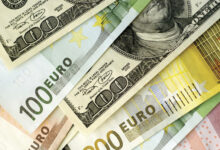
Kiev has stopped flows via a key transit point, raising fears of European energy shortages

© Getty Images / Michael Moeller / EyeEm
Ukraine’s gas network operator on Wednesday stopped the transit of Russian natural gas to Europe through one of its key cross-border stations, citing “interference by the occupying [Russian] forces.” Here is what this development means for the European gas market and economy.
- What happened?
Ukraine’s gas network operator, GTS Ukraine, announced late Tuesday that it would stop receiving Russian natural gas into the Sokhranivka gas metering station starting on Wednesday because it can no longer control the infrastructure in territory “occupied” by Russian troops. According to the statement of the company’s press service, “the occupying forces” interfered in the technological processes, jeopardizing the security of the country’s entire gas transportation system. The company said it views the situation as a force majeure, stating it is unable to provide deliveries to Europe for reasons beyond its control. - How does this effect European gas supplies?
They are declining. GTS Ukraine initially said it would temporarily transfer the Sokhranivka flows to its second, and largest, transit station – Sudzha, which is located on territory controlled by Kiev. Russian gas exporter Gazprom, however, later announced that it is technically impossible to do so. As the Sokhranivka station handles roughly a third of the Russian gas flows entering Ukraine for further transit, this amount of gas will be lost to European buyers as a result of the station’s closure. Gazprom said it was set to supply 72 million cubic meters of gas to Europe via Sudzha station on Wednesday, while the day before, the total confirmed applications of European consumers amounted to 95.8 million cubic meters. At their peak, applications from Europe reached 109.6 million cubic meters in early March. This means that Europe has just lost between 25% to 34% of its Russian gas deliveries. - How does this effect gas prices?
Gas prices in Europe initially surged after Ukraine’s cutoff, surpassing $1,100 per thousand cubic meters of gas early Wednesday. Experts say the situation will inevitably lead to a price hike, as European consumers assess the decrease in volumes. For instance, data from the company Snam, which transports gas to Italy, shows that the flow of Russian gas has indeed dropped compared to yesterday, while Germany’s regulator said Russian flows through Ukraine decreased by almost a quarter compared to Tuesday. - What are the other consequences?
Russia covers around 40% of Europe’s total natural gas needs. The EU relies on cheap Russian gas to heat homes, cook meals, and generate electricity in most of the bloc’s 27 member states. The drop in supplies could, in the worst-case scenario, lead to problems in the power grid, rolling blackouts, and shutdowns in industries. Increasing gas prices could also propel prices for other commodities and consumer goods, pushing already historically high inflation even higher. Inflation in nine EU nations has already reached over 10%. European consumers urgently need to find alternatives. - What are the EU’s alternatives to Russian gas?
European buyers could demand an increase in gas deliveries from Europe’s second-largest supplier, Norway. In 2021, the country supplied close to a quarter of gas in the EU and UK. However, Norwegian oil and gas fields are producing at nearly 100% capacity, and while the country did recently pledge to ramp up production in the summer, it is unlikely to make up for the loss of Russian supplies. Europe’s other option is to buy liquefied natural gas (LNG) from the US and the Middle East, but this commodity – and its transportation – comes at a much higher price than Russian gas. Also, there is a limit to how much LNG suppliers can produce and transport, and experts say the global liquefaction capacity is almost fully utilized. Plus, some EU countries have no access to LNG shipments as they are landlocked. - Is there a way to fix the situation?
Europe could come up with alternatives in the long run – for instance, it could finally grant the long awaited and currently blocked certification to Russia’s Nord Stream 2 pipeline, which goes to Europe via the Baltic Sea and is capable of supplying nearly twice as much gas as the Sokhranivka transit station. Also, Kiev could reopen the station and not lose the money it receives from Russian gas transit. Finally, Kiev and Moscow could reach a peace deal – however, this outcome hinges on the participation of the US and EU, which at this point is unlikely.
For more stories on economy & finance visit RT’s business section




